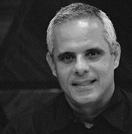RESEARCH ARTICLE
Structural Basis of Joint Instability as Cause for Chronic Musculoskeletal Pain and Its Successful Treatment with Regenerative Injection Therapy (Prolotherapy)
R.A. Hauser*, 1, P.J. Blakemore2, J. Wang3, D. Steilen1
Article Information
Identifiers and Pagination:
Year: 2014Volume: 7
First Page: 9
Last Page: 22
Publisher ID: TOPAINJ-7-9
DOI: 10.2174/1876386301407010009
Article History:
Received Date: 03/06/2014Revision Received Date: 18/06/2014
Acceptance Date: 23/06/2014
Electronic publication date: 09/9/2014
Collection year: 2014

open-access license: This is an open access article distributed under the terms of the Creative Commons Attribution 4.0 International Public License (CC-BY 4.0), a copy of which is available at: https://creativecommons.org/licenses/by/4.0/legalcode. This license permits unrestricted use, distribution, and reproduction in any medium, provided the original author and source are credited.
Abstract
Joint dysfunctions and associated musculoskeletal pain are among the most common medical complaints presented to clinicians. Ligaments are collagenous fibrous structures that are primarily responsible for maintaining smooth joint motion, restraining excessive joint displacement, and providing stability across the joint. Ligaments also act as sensory organs for the joints and have significant input to pain sensation. When ligaments are subjected to forces beyond their normal range of motion, injury and failure occur, resulting in joint laxity (looseness or instability), and subsequent disruptions in the balance between joint mobility and joint stability. These dysfunctions can result in joint pain and the development of osteoarthritis. Several strategies have been employed over the years in attempts to improve joint instability from ligament injury; however, some of the standard therapeutic approaches (drugs, corticosteroid injections, and surgery) employed to address these problems have not been very effective because they often do not address the underlying cause of the problems, and in fact can inhibit ligament healing and restoration. For these reasons, there is current and growing interest among patients and clinicians in prolotherapy, an alternative therapeutic modality that can reduce or eliminate pain by stimulating the natural regenerative processes in and around the joint to facilitate the restoration of degenerated ligaments and tendons to a healthy state, improving joint support, function and reducing pain. This review presents current evidence from clinical studies demonstrating that prolotherapy is a significant and effective alternative treatment modality for people with ligament-related injuries and resultant joint instability.








